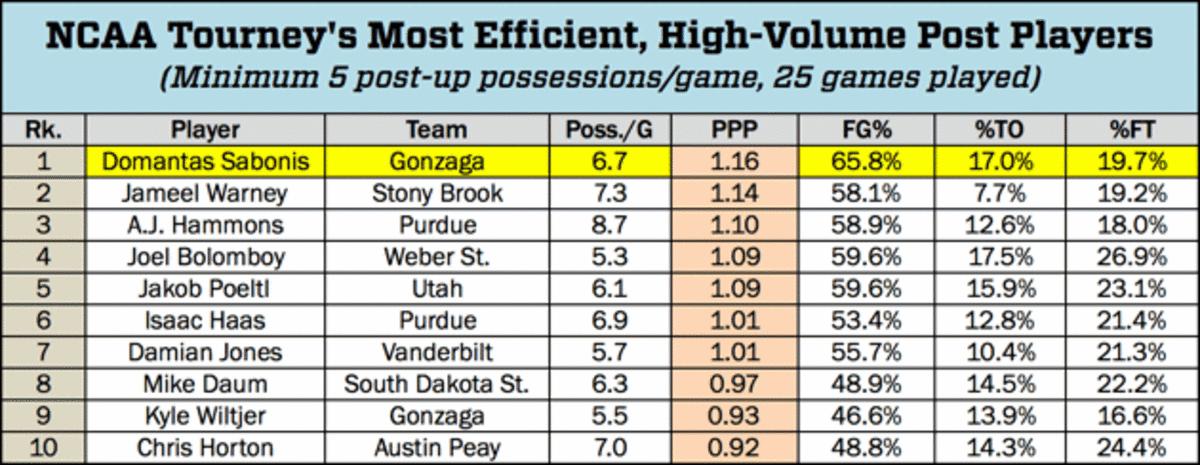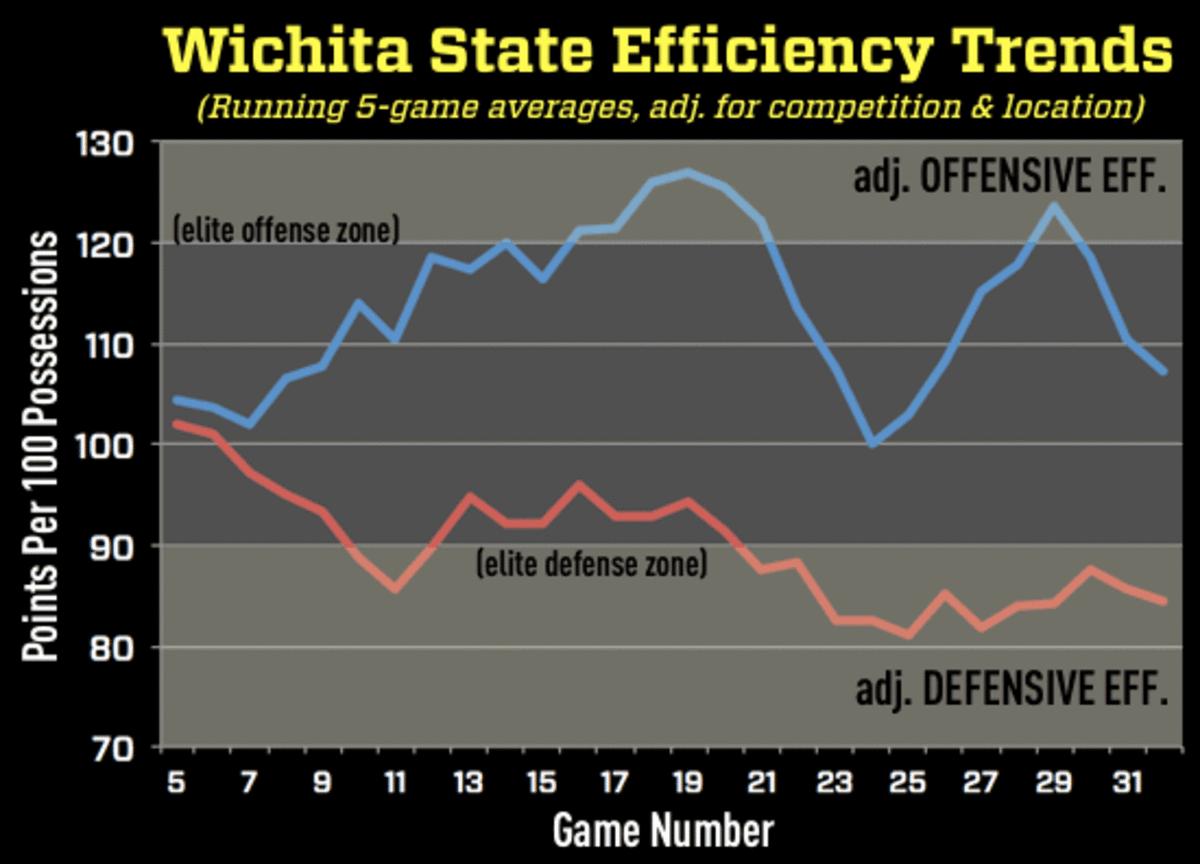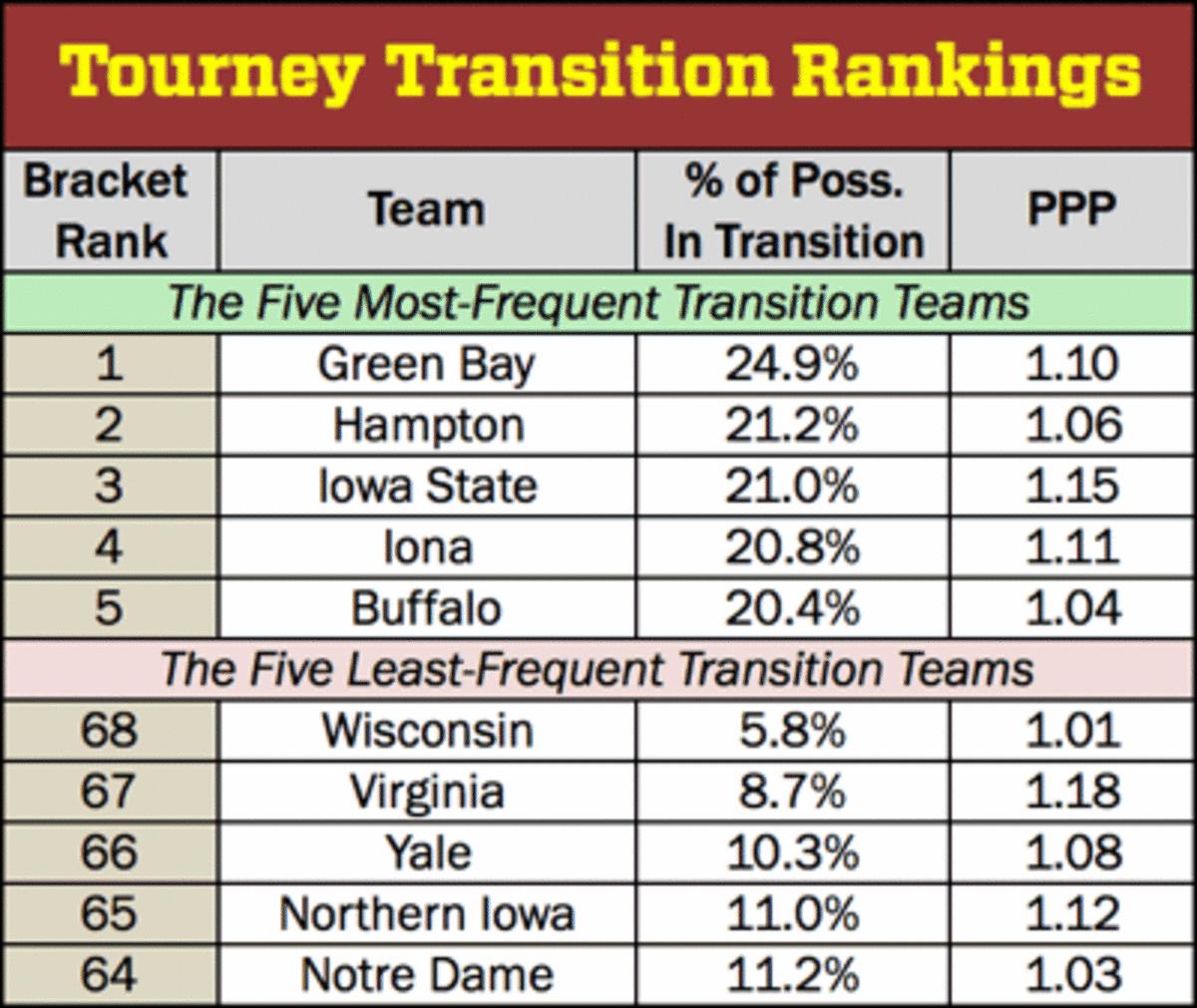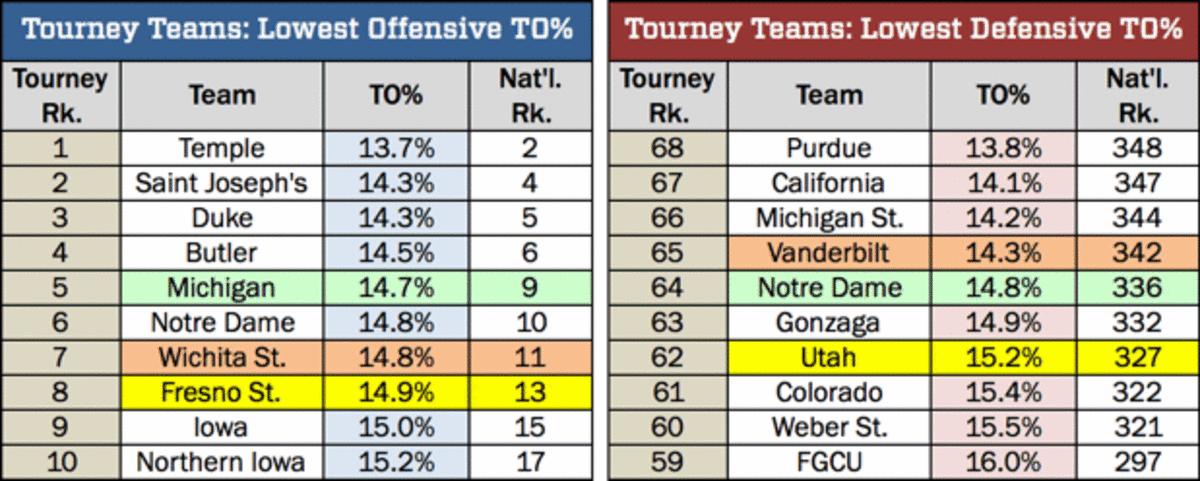NCAA tournament Cinderella Power Rankings

Ranking the No. 11-or-higher seeds with the best odds of advancing—and identifying the 16 seed with the best shot at making history …
1. Northern Iowa (West No. 11, vs. Texas)
Northern Iowa’s entire body of work makes them the 71st-ranked team in efficiency on kenpom.com, while their first-round opponent, Texas, is ranked 41 spots higher. But there’s one big reason to have faith in the Panthers: Their performance against high-level competition has been remarkably good.
I ran efficiency splits (and adjusted them for location and competition) on Northern Iowa’s games vs. top-50 kenpom.com teams and its games vs. teams ranked 51–351. When the Panthers played opponents in that latter group, they performed at an efficiency level equivalent to the 80th-best team in the nation. But in going 5–1 against top-50 teams—beating Stephen F. Austin, North Carolina, Iowa State and Wichita State twice—the Panthers played at a level equivalent to the 12th-best team in the nation. They play up to (and above) the level of elite competition:

2. Gonzaga (Midwest No. 11, vs. Seton Hall)
Something Seton Hall’s aggressive defense didn’t face in its romp through the Big East tournament: an efficient, high-volume post player like Gonzaga’s Domantas Sabonis. He’s the best one in the NCAA tourney bracket, averaging 1.16 points per possession in the post, per Synergy Sports Technology:

The chart above shows that while Sabonis is more turnover-prone than other elite posts, he’s nearly automatic when he gets a shot off, making an amazing 65.8% of his attempts. You don’t shoot with that kind of accuracy, at this volume, without a deep arsenal of moves—and Sabonis, true to bloodline as the son of one of the most skilled big men in the history of basketball, has at least six ways to score on the blocks. This montage (working title: <i>The Sabonis Progression</i>) should give you an idea of how he works:
3. Wichita State (South No. 11, vs. Arizona)
If you wrote this team off after seeing it give non-Wichita-like performances in November, December, or January, give it a second chance. The Shockers began defending at an elite level in February and March, and Tuesday’s First Four win over Vanderbilt was the fifth time since Feb. 3 that Wichita has held an opponent under 0.80 points per possession. Here’s a look at the five-game running averages of the Shockers’ competition-and-location-adjusted efficiencies over the course of the season:

4. Yale (West No. 12, vs. Baylor)
If you’re dead-set on picking a No. 12 over a No. 5, the argument for Yale is compelling on multiple levels. First, kenpom.com‘s efficiency-based log5 odds give the Bulldogs the best chance of any No. 12 at making it out of the first round (39.3%) and of making the Sweet 16 (17.6%).

Yale also has the biggest geographical advantage of any No. 12 in the first round. I try to avoid going overboard in factoring tourney travel distances into my picks, but when there’s a situation as glaring as Yale-Baylor in Providence—with the Bulldogs playing barely an hour away from New Haven and the Bears 1,582 miles from Waco—it’s important to consider:

(Travel chart data source: Crashing The Dance)
5. Iona (Midwest No. 13, vs. Iowa State)
Iowa State-Iona might be my favorite first-round game from a viewing standpoint, because both teams love fastbreaks. They’re the Nos. 3 and 4 most-frequent transition offense teams in the bracket, according to Synergy data:

Neither team plays great defense (the Cyclones rank 101st in adjusted defensive efficiency, and the Gaels rank 124th), and thus the game has the highest over-under lines in the first round, ranging from 167 to 168. Iona doesn’t need a numbers advantage to push the ball, either. It’ll run off of missed shots—long three-point rebounds in particular—and makes, including an instance in this edit of a one-on-everyone fastbreak off an opponent’s made layup:
5. South Dakota State (South No. 12, vs. Maryland)
The most efficient, high-volume scoring freshman in the nation this season is not LSU’s Ben Simmons or Duke’s Brandon Ingram. It’s South Dakota State’s Mike Daum, a 6’9” power forward who’s the son of an obscure, former NFL tight end. The “Dauminator“ was a no-star recruit out of Kimball, Neb., who redshirted his first season at SDSU and has since emerged as a legit inside-outside scorer with an offensive rating of 124.4 and a usage rate of 31.2%.
The Jackrabbits love to use Daum as a ballscreener in their secondary break. One of their staple actions is a Daum ballscreen-and-roll to the post, with the ball passed to the wing before it’s entered to Daum. He can hit face-up jumpers, face up and drive, or simply score on the blocks, and will be a tough assignment for Maryland’s frontcourt:
6. Stephen F. Austin (East No. 14, vs. West Virginia)
The Brooklyn matchup between West Virginia and Stephen F. Austin features the Nos. 1 and 2 turnover-creating teams in the nation, but they achieve those results using different methods. The Mountaineers create an estimated* 36.0% of their turnovers directly via their press—hence the name Press Virginia—while the Lumberjacks get the bulk of their takeaways in the halfcourt, by playing an an aggressive, deny-the-passing lanes man-to-man.

Here’s a clip of a quintessential Stephen F. Austin-forced turnover; the Lumberjacks speed up their opponent by pressing, but it’s the annoyance of their halfcourt D, which forces the ballhandler to the wing, then fronts the past and denies all other passing options, that causes the real problem:
(* Estimated from Synergy data on press defense and overall turnover totals.)
7. Fresno State (Midwest No. 14, vs. Utah)
If Fresno State is going to upset Utah—and the odds aren’t all that great—it’ll be by winning the ball-control game. The biggest thing the Bulldogs have going for them is their ability to avoid turnovers, as they rank eighth among tourney teams in offensive TO%. And the weakest thing about Utah’s defense is that it doesn’t create many turnovers. The Utes have the seventh-lowest defensive TO% in the bracket:

8. The Requisite 16-Seed Pick: Florida Gulf Coast (East No. 16, vs. North Carolina)
If your threshold for believing in a 16 seed is a 5%-or-higher chance to win, well, get excited: There are two 16s who come in above 5% in kenpom’s log5 formula, and one of them—Dunk City!—has already advanced out of its play-in game:

Florida Gulf Coast’s head coach, Joe Dooley, has also beaten Roy Williams once before. Dooley was an assistant at Kansas when the Jayhawks took down North Carolina in the 2008 Final Four. Dunk City beating UNC here would be a slightly bigger deal.
